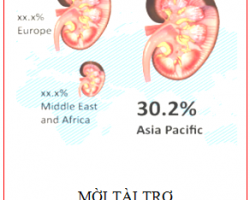Content
Such limits can be set to manage existing and potential bad debt expense overall and for specific customers. For example, a company could dictate tighter credit terms based on each customer’s unique circumstances. In some cases, a company might avoid extending credit at all by requiring a buyer to procure a letter of credit to guarantee payment or require prepayment before shipment. One company changed its approach to bad debt management after two major clients defaulted on their bills, leaving the company facing tens of thousands of dollars in losses.
In this case, historical experience helps estimate the percentage of money expected to become bad debt. Companies that use the percentage of credit sales method base the adjusting entry solely on total credit sales and ignore any existing balance in the allowance for bad debts account. If estimates fail to match actual bad debts, the percentage rate used to estimate bad debts is adjusted on future estimates. In general, the longer an account balance is overdue, the less likely the debt is to be paid. Therefore, many companies maintain an accounts receivable aging schedule, which categorizes each customer’s credit purchases by the length of time they have been outstanding.
Accounts receivable aging method
Each category’s overall balance is multiplied by an estimated percentage of uncollectibility for that category, and the total of all such calculations serves as the estimate of bad debts. The accounts receivable aging schedule shown below includes five categories for classifying the age of unpaid credit purchases. To put the allowance method into practice, you must create an allowance for doubtful accounts.
- For that reason, the direct write-off method works best when recording immaterial debts or if you only have a few uncollected invoices.
- If your business uses credit sales as its main sales method or has to write off debt regularly, it’s best to use the allowance method.
- That is why unless bad debt expense is insignificant, the direct write-off method is not acceptable for financial reporting purposes.
- If you have a company or run a small business, you should have different payment terms to accommodate your clients.
- Bad debt expense or BDE is an accounting entry that lists the dollar amount of receivables your company does not expect to collect.
- Typically, larger businesses rely on one of the first two methods due to the complexity of running these assessments across a big customer pool.
- Once you have obtained the percentage of bad debt, you will use it to determine the amount of bad debt that might be incurred in the current year.
According to Section 36(2)(iii) of the IT act, if a bad debt is already written off, it is not allowed to be a deduction on the grounds that there are still possibilities for recovery. To calculate your allowance, you first need to calculate your bad debt rate, which is based on your past experiences. Bad debt expense helps you quantify lost receivables and measure collection effectiveness. BDE is also a measure of the quality of your overall customer experience since healthy customer relationships mean fewer disputes and uncollected invoices.
How to Calculate Bad Debt Expense?
You can compare your total with the previous years and see if there is a variation. The services/products have been delivered, the invoices sent, but the payment never came. Selling goods/services and getting paid for them is at the core of any business. Yet in these troubled economic times, there is no certainty regarding when you’ll get paid by your clients. Join the 50,000 accounts receivable professionals already getting our insights, best practices, and stories every month. Collaborative AR makes it easier for your AR staff to communicate with customers to clear up issues that often lead to payment delays, such as disputed invoice charges or missing remittance information.
The reason for this is that it gives a more accurate picture of your financial health. Writing off these debts helps you avoid overstating your revenue, assets and any earnings from those assets. This will reduce the amount of bad debt that can be incurred https://dodbuzz.com/running-law-firm-bookkeeping/ in the future. If you’re using the wrong credit or debit card, it could be costing you serious money. Our experts love this top pick, which features a 0% intro APR for 15 months, an insane cash back rate of up to 5%, and all somehow for no annual fee.
Calculate Bad Debt Expense
The same strategy could be used to manage credit for customers that have outstanding debts over a certain amount or that are a certain number of days late on their bills. Regardless of how you choose to measure it, ADA calculations can be easily set up and managed through solutions that automate the collection process. Even with larger customer pools, companies can run these reports as often as needed to ensure they’re maintaining an accurate view of their finances.
Accountants record bad debt as an expense under Sales, General, and Administrative expenses (SG&A) on the income statement. The allowance method is to estimate the amount of bad debt by deducting receivables related allowances from total accounts receivable. This method requires that a company evaluate the percentage of customers that will not pay for their order and then calculate the allowance for these debts. A bad debt expense is a portion of accounts receivable that your business assumes you won’t ever collect.
The accounts receivable aging method is based on accounts receivables from different ages. The total amount of estimated debt from each account receivable is the total debt. One way companies derive an estimate for the value of bad debts under the allowance method is to calculate bad debts as a percentage of the accounts receivable balance.
- Accountants debit that amount from the company’s bad debts expense and credit it to a contra-asset account known as allowance for doubtful accounts.
- The first step in resolving any bad debt issues is to understand how much you are owed, which is where your bad debt expense formula comes in.
- As explained earlier, the allowance method involves a prediction of the doubtful debt to determine a reserve amount.
- Discounted cash flow (DCF) is a valuation method used to estimate a company’s or investment’s intrinsic value…
- The journal entry to estimate and record bad debt using either method will result in a debit to bad debt expense and a credit to allowance for doubtful accounts.
- Before we get into the ways to prevent and reduce bad debts, it’s important to understand why bad debts happen.
This is the amount of money that the business anticipated losing every year. The bad debts are the losses that the business suffers because it did not receive immediate payment for the sold goods and provided services. It’s recorded in the financial statements as a provision for credit losses. Applying historical loss rates to today’s receivables is not always sufficient, as conditions may be dramatically different going forward from what happened in the past.
Recording a bad debt expense using the direct write-off method
In this example, Company A has a total net sales of £100,000 and bad debt expenses of £2,000 for the accounting period. Enter the total sales for the accounting period and estimated % or bad debt into the calculator to determine the bad debt expense. Examining Specific Accounts
While applying percentages based on past experience provides a mathematical answer, most companies and auditors want to review specific accounts. Auditors typically look at all large balances (“large” is relative to the company), as a loss on one single account could have a dramatic impact on receivables losses and reserves. The Internal Revenue Service (IRS) allows businesses to write off bad debt on Schedule C of tax Form 1040 if they previously reported it as income. Bad debt may include loans to clients and suppliers, credit sales to customers, and business-loan guarantees.









